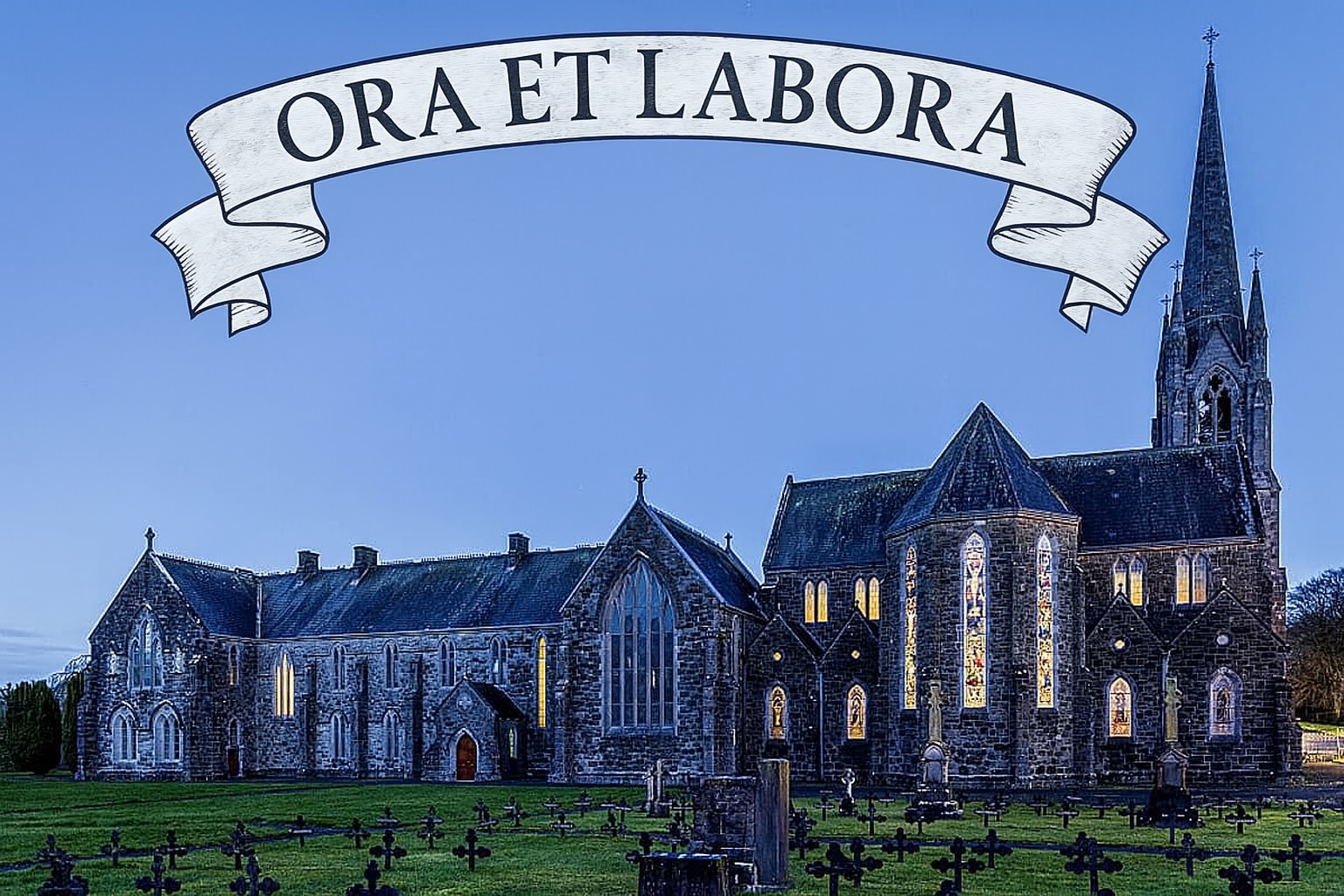The Rule of St Benedict has stood for centuries as a foundational text for Western monasticism, but it has taken special root – and with such enduring spiritual and cultural depth – within the Cistercian tradition in Ireland. Here, the Rule has served not merely as a guide for monastic discipline, but as a living framework—shaping a way of life marked by silence, stability, community, and the sanctity of daily labour and prayer.
Irish Cistercian monasteries found in the Rule a profound call to simplicity, humility, and balance. At times when the wider Church was absorbed in temporal affairs, the Rule’s quiet insistence on obedience, conversion of life, and the daily rhythm of ora et labora offered an alternative vision—one rooted in stillness and spiritual clarity. It was a vision well suited to the Irish landscape, whose rural beauty and contemplative atmosphere seemed to echo the Rule’s deeper values.
The Rule shaped not only how Irish Cistercians lived, but how they engaged with the world around them. Monasteries such as Mellifont, Baltinglass, and Boyle became more than just spiritual centres—they were places of agricultural innovation, learning, and hospitality. The Benedictine emphasis on manual work as a form of prayer resonated deeply with Irish monastic communities, who tilled the land, built stone churches, and lived close to the rhythms of nature. In this context, the Rule did not distance monks from the world—it drew them more deeply into its divine texture.
Hospitality, too, holds a central place in the Rule, and in Ireland this found particular cultural resonance. The practice of receiving every guest as Christ himself aligned naturally with Irish values of welcome and generosity. Even within the austere simplicity of the Cistercian life, there remained a deep pastoral sensitivity—a willingness to offer space, silence, and rest to pilgrims, retreatants, and those seeking God.
Today, as the modern world becomes ever faster, louder, and more fragmented, the Rule continues to speak—perhaps more urgently than ever. The Irish Cistercian expression of Benedictine life offers a quiet resistance: rootedness instead of restlessness, prayer in place of performance, and community over individualism. The monastery becomes a witness, not to nostalgia, but to the enduring relevance of stability, silence, and spiritual depth.
Ultimately, in the Irish context, the Rule of St Benedict is not a relic of medieval asceticism but a living document—a spiritual path walked slowly and faithfully. It invites all who encounter it to rediscover the sacred in the ordinary, to listen deeply, and to allow one’s life to become, in Benedict’s own words, “a school for the Lord’s service”.
